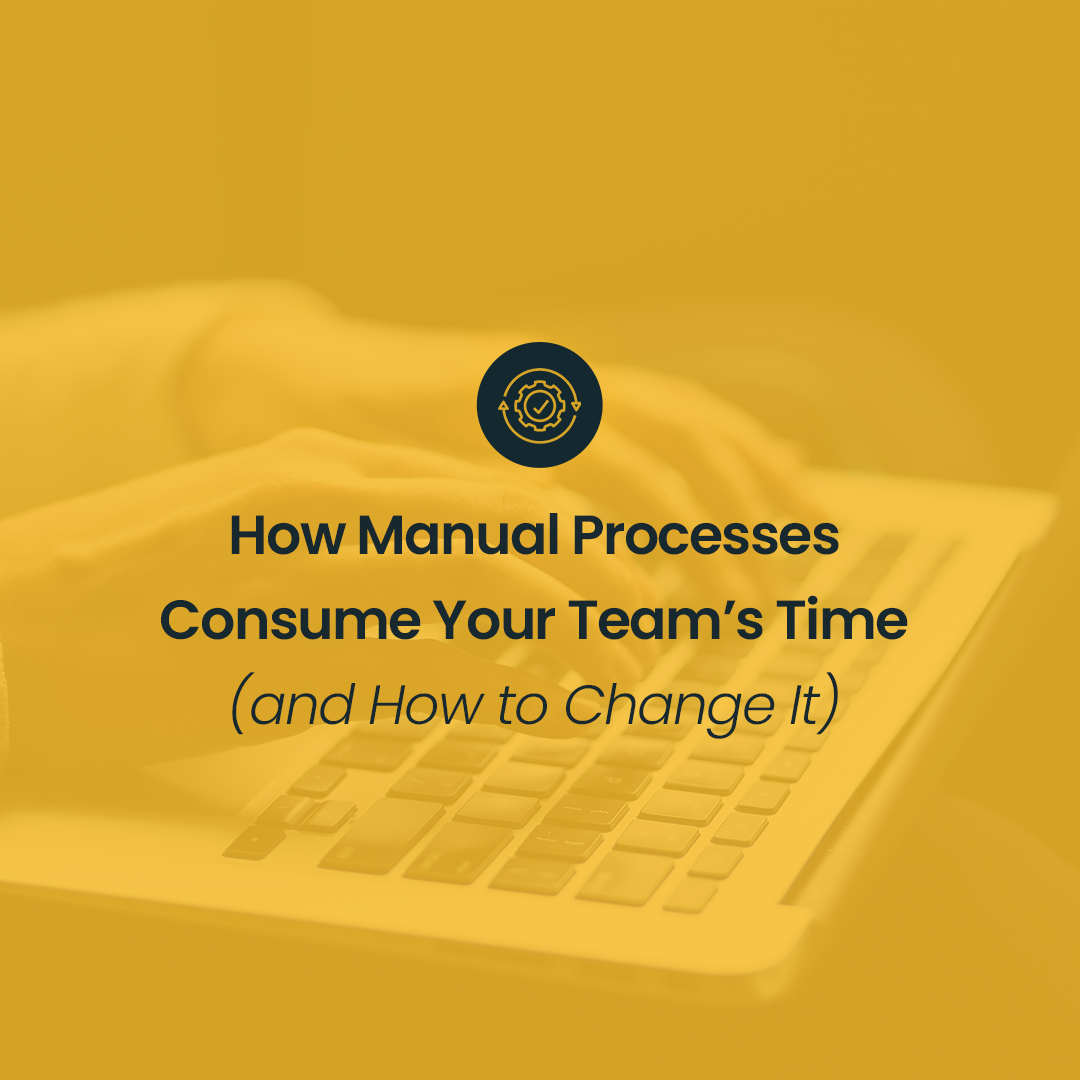Google Analytics 4 (GA4) and Amplitude are two popular analytics tools that cater to different needs for marketing and analytical teams. While they are often compared as competitors, they are not the same tools. Each has its own strengths and applications. There are areas where GA4 remains indispensable and others where Amplitude proves to be more precise and functional, especially when it comes to understanding user behavior and making informed product decisions.
GA4 – The Backbone of Marketing Reporting
Google Analytics has long been the natural choice for marketing teams. It integrates with Google Ads, Firebase, BigQuery, and other services within the Google ecosystem, making it easy to track campaigns, attribution, and conversion paths. The most common uses for GA4 include:
Evaluating campaign effectiveness (ROAS, CAC),
Analyzing traffic sources and marketing funnels,
Integrate quickly with Google Tag Manager and Consent Mode,
Tracking events on the website (enhanced measurement),
Easy transition to BigQuery for data centralization.
For companies with a robust performance marketing strategy, GA4 is often the first choice, especially since the basic version is free.
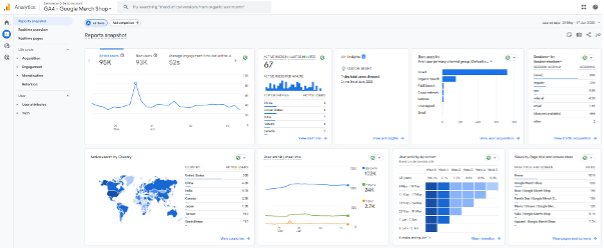
Amplitude – A Tool for Product and E-commerce Teams
Compared to GA4, Amplitude offers more functionalities related to user behavior analysis, retention, onboarding, and A/B testing in digital applications and products. It is therefore more frequently preferred by analytical teams and e-commerce professionals.
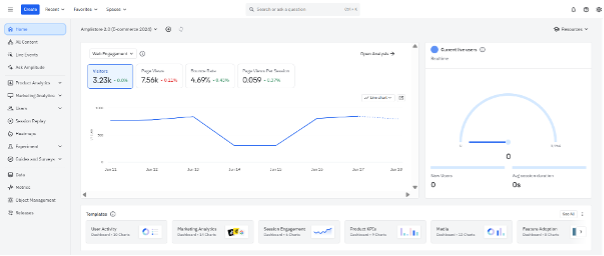
How does it do it?
1.User Identification and Tracking
Amplitude uses three independent layers of identification:
Device ID – tracks the user on the device level,
User ID – links user sessions across different devices after login,
Amplitude ID – a unique identifier automatically assigned by Amplitude, facilitating data deduplication and consolidation.
In practice, this means greater consistency and continuity of data, especially where users move between devices or browse an app before logging in.
2. No Data Sampling
Data sampling can be compared to exit polls. It involves analyzing only a portion of the data at the beginning of the analysis and forecasting results based on that. However, this can sometimes lead to incorrect conclusions, especially when analyzing segments, funnels, or rare events.
Unlike GA4, Amplitude does not apply data sampling, even with large datasets. This ensures that funnel analyses are more accurate, rare events (e.g., abandonment at critical steps) are fully captured, and segmentations remain precise.
This is especially important for teams that make decisions based on quantitative data.
3. Near Real-Time Data
In Amplitude, data is available within seconds or minutes of an event. This allows for dynamic campaign tracking, faster A/B testing, and error monitoring in the user journey. In GA4, data appears with a delay (data processing time ranges from a few hours to around a day), and many e-commerce specialists are aware that during this time, users can be easily lost.
4. More attributes and measures
In the free version of GA4, you can assign 25 event parameters and 25 user properties. In the paid version, you can assign up to 100 custom parameters per event and up to 25 custom parameters per user. In Amplitude, these limits are much higher: 2000 event parameters and 1000 user parameters. This opens the door to creating much more detailed funnels, cohorts, segments, and custom dashboards, especially in applications and SaaS platforms.
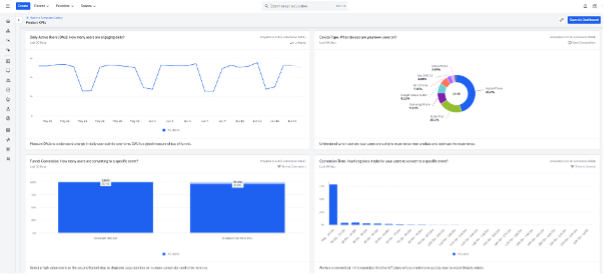
When to Choose Amplitude?
Amplitude is a better fit for:
Optimizing mobile app activity (DAU, MAU, retention),
Building precise user funnels and cohorts,
Quick insights for A/B testing and product iterations,
Working with non-sampled data,
Minimizing analytical debt and standardizing events.
Thus, Amplitude best meets the needs of:
Product Managers and those responsible for mobile apps,
Head of Data and Analytics Leads,
E-commerce teams monitoring detailed shopping paths (e.g., abandoned carts).
Where GA4 Still Wins?
GA4 might be a better choice if:
Your activities focus mainly on performance marketing and tracking traffic sources,
You already have a stack based on Google (Ads, Firebase, BigQuery),
You need a simple, free tool to start with,
You want to quickly implement basic events without developer involvement.
GA4 and Amplitude in Parallel?
Does the question need to be: Google Analytics or Amplitude? Not necessarily. Both platforms can, and often should, work in parallel. Using GA4 and Amplitude together provides a broader and more balanced view of user behavior, campaign effectiveness, and product performance.
GA4 and Amplitude are designed with different priorities in mind. GA4 is primarily a marketing tool, while Amplitude is a product analytics platform. Since each tool specializes in a different area, they can be successfully used together, offering a more complete and cohesive view of the user and their interactions with the product.
When is it beneficial to use both tools?
Tracking campaign effectiveness in GA4, analyzing product behaviors in Amplitude.
GA4 will show you where the user came from and how much their conversion cost. Amplitude will help you understand what happens afterward—whether the user returns, what drives retention, and what their retention looks like.
A/B Testing with Deeper Insights.
GA4 measures conversions and goals, but Amplitude allows for tracking the long-term impact of tests on retention and engagement.
Combining Marketing and Product Perspectives.
GA4 - for marketing: Where users are coming from and which campaigns are working. Amplitude - for product teams: How users interact with the product, who drops off, and why.
Quick Data Insights + Full Event Analytics.
GA4 - quick analysis of basic metrics. Amplitude - advanced reports, segmentation, cohorts, and user journeys.
Benefits of Integrating GA4 and Amplitude
Complementary Data Approach - GA4 tracks the path from click to conversion, Amplitude tracks from conversion to loyalty.
Increased Flexibility - If GA4 limits you with sampling or the number of parameters, supplement your data with Amplitude.
Better Team Collaboration - Marketing works in GA4, while product and UX teams work in Amplitude - each sees what matters most.
Greater Technological Independence - Two different tracking and tagging mechanisms provide redundancy and more control over data quality.
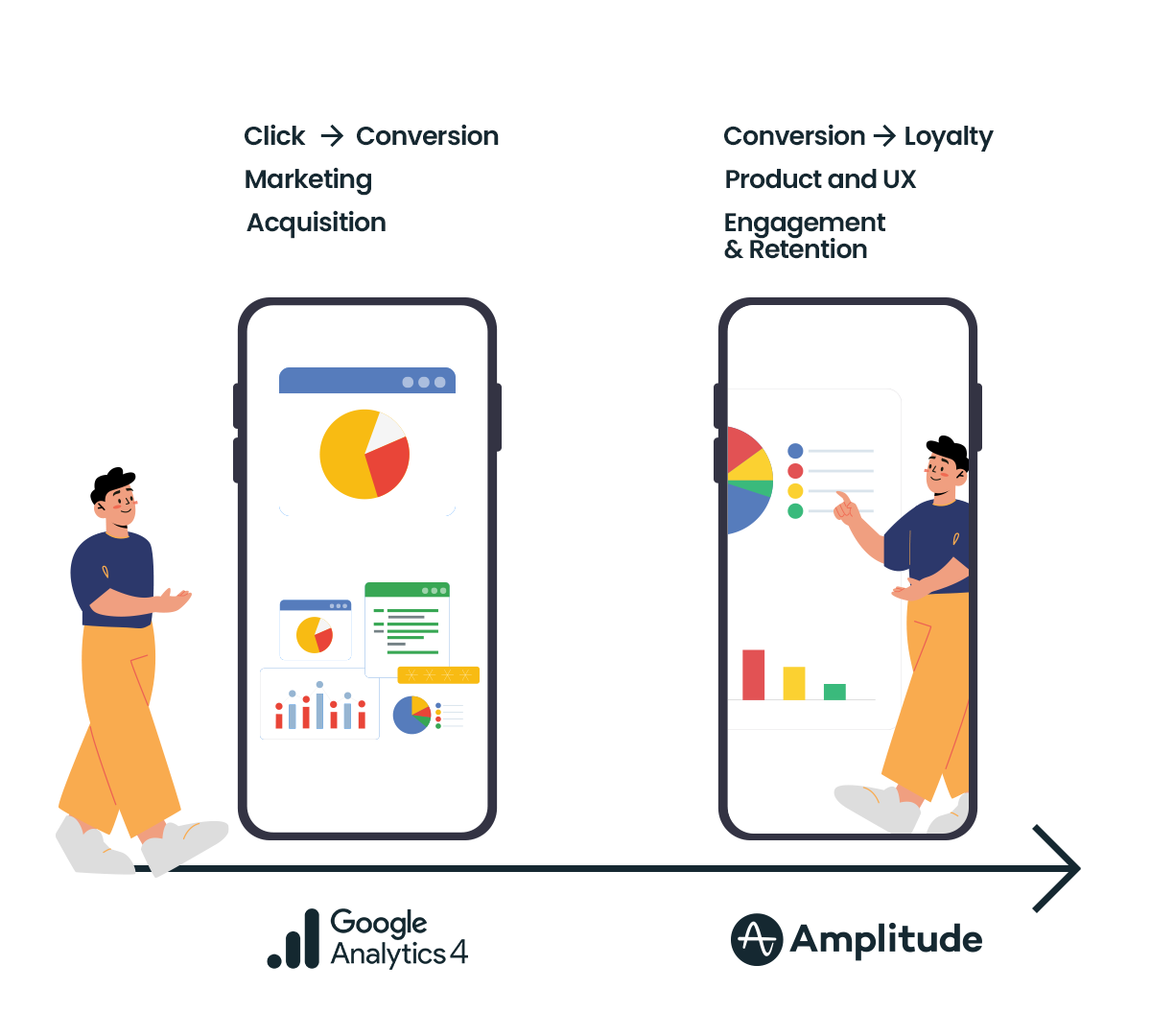
Choosing a Tool Based on Habits or Goals?
In the age of unlimited data access, it becomes clear that the choice of analysis tool should not be based on habits but on the goals and needs of your organization.
If your challenges involve data consistency, precise segmentation, and automated product decisions, implementing Amplitude is worth considering. If integrations with Google Ads and quick insights into campaign results are key, GA4 remains irreplaceable. It’s also important to note that in mature organizations, Amplitude and GA4 can complement each other, addressing different needs and providing a comprehensive picture of user data.
At Salestube, we advise companies on how to effectively use both of these tools, regardless of which one dominates your tech stack.
Let’s discuss your needs.





